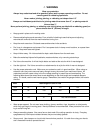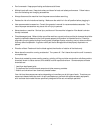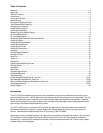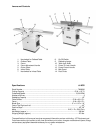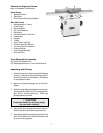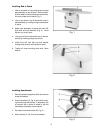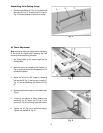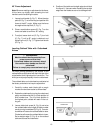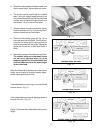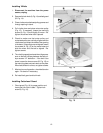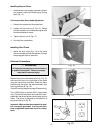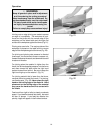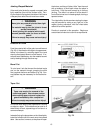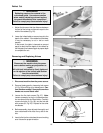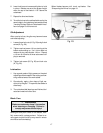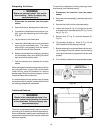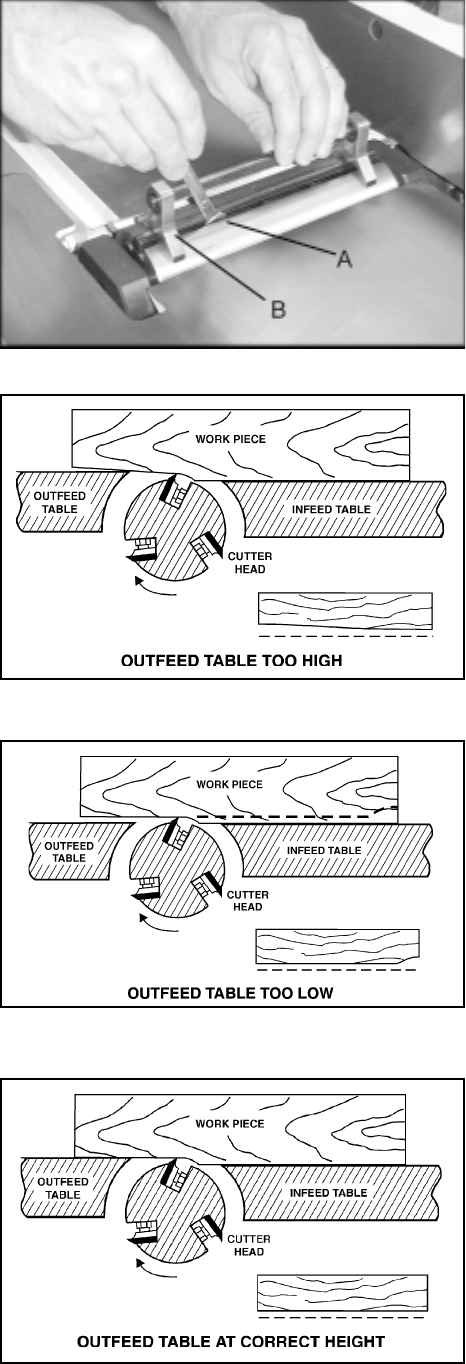
11
5. When the outfeed table and blade number one
are the same height, tighten table lock screw.
6. The knives must be parallel with the outfeed
table. Bring the straight edge forward to the
front of the outfeed table and confirm that blade
number one is at the same height at the front of
the table as it is at the back of the table.
7. If blade is higher or lower at one point, slightly
loosen five screws (A, Fig. 10) by turning clock-
wise as viewed from the infeed table.
8. Place the knife setting gauge (B, Fig. 10) on
the cutterhead over the blade. Continue loos-
ening the five screws until the springs push the
knife up into contact with the gauge. Alternately
tighten the five screws to hold each blade in
place.
9. Repeat this process with blades two and three.
The outfeed table and cutterhead knives
are correctly adjusted when all three
blades are parallel to the outfeed table and
all three blades are set at the same height
in the cutterhead.
After the outfeed table has been set at the correct
height, do not change it except for special opera-
tions or after replacing the knives.
If the outfeed table is set too high, a curved finished
surface results. (Fig. 11)
If the outfeed table is set too low, gouging results at
the end of the cut. (Fig. 12)
Figure 13 illustrates the outfeed table at the correct
height.
Fig. 10
Fig. 11
Fig. 12
Fig. 13



